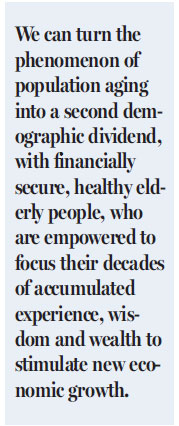Elderly key players in global development agenda
As the number of elderly in the Asia-Pacific region increases exponentially, we must seek new and innovative approaches to turn this demographic trend into an opportunity to help achieve the ambitious targets of the 2030 Agenda for Sustainable Development.
The number of elderly people in the region is expected to more than double, from 535 million in 2015 to about 1.3 billion by 2050, we need to consider what effects this will have on the region's economies and societies, as well as people's livelihoods. Ignoring this challenge would likely have profound consequences. We cannot leave the care of the aged to their families nor can we ignore the need for progressive healthcare and income support systems. Future economic growth cannot be assured by the current and projected working-age population. The ratio of the working age population to the elderly population is decreasing sharply, and in most countries of the Asia-Pacific region, less than one-third of the working-age population contributes to a pension.

Traditional systems rely on the family to support their aging relatives - both financially as well as providing care for those who need it. However, with smaller families, there will be fewer family members of working age to shoulder this responsibility. Declining family support ratios also have implications for existing social security provision, particularly pay-as-you-go pension schemes, under which the contributions paid by current workers support the pensions of retirees.















